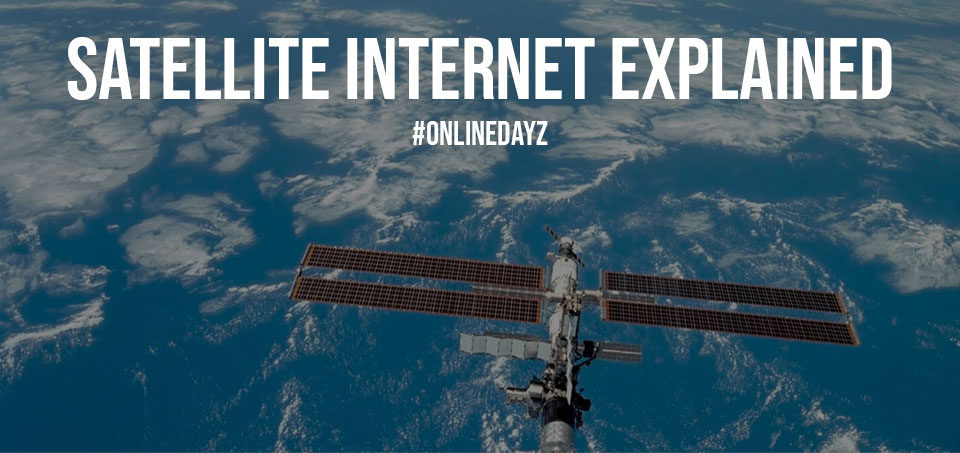Satellite Internet Explained
Satellite internet isn’t a new concept, but it’s in the spotlight again on a larger scale thanks to the growing number of companies now offering a newer approach to satellite-delivered internet connections. Starlink is the most prominent one since it’s associated with Elon Musk’s SpaceX company.
However, many other notable players – Amazon, HughesNet, and OneWeb, just to name a few – have jumped into what some have referred to as “the new space.” All this brings us to the topic of the basics of satellite internet.

If you’re new to this approach to having internet provided, keep reading for a brief overview of satellite internet.
Just What Is Satellite Internet?
Satellite internet is kind of similar to how satellite TV works in that the signal comes from a satellite above the planet and makes its way to a dish set up somewhere outside of your home, like a roof, house wall, or spot in the yard.
There’s also no need to worry about putting up lengthy cable lines just to get your internet service via satellite.
Also Read: How To Find An App Developer?
So, How Does It Work?
Typically, satellites orbiting the planet use radio waves. Elon Musk’s Starlink service is a bit different in that it uses lasers to send the signal instead.
Either way, a communication network sends and receives the data that allows you to use and enjoy internet service and perform various tasks like downloading and streaming. Network operations centers then receive the signal that’s sent back to Earth and get it to your home or business.
What’s the Big Deal about Satellite Internet?
Until recently, satellite internet was honestly not much of a big deal when compared to the speed and reliability associated with other forms of the internet like broadband cable.
This is, however, changing since newer forms of satellite internet are now delivered with satellites that orbit closer to Earth. What this does is improve reliability and boost speed enough to allow for a wide range of tasks to be performed without too many issues.
What Do You Need for Satellite Service?
There are a few things you’ll need on your end in order to benefit from and use satellite internet service. This is a list that typically includes:
• An internet-connected device like a PC, phone, or laptop
• A modem, router, or a combination modem/router
• A satellite dish
Starlink does provide a startup kit that includes the router and dish. Other providers should offer similar kits for new customers, although it’s best to check beforehand to see what’s included with the initial setup fee.
How Much Does It Cost?
Costs vary from one provider to the next, as is the case with other forms of internet service. However, Starlink is currently charging $99 per month once the initial setup kit is purchased.
If satellite service is what you’re considering, shop around and see what’s available in your area before you commit to any one service provider. Reportedly, there are other companies that plan to offer satellite service for around $50 to $100 per month in the United States.
Also Read: How to Protect Your Business Moving Forward to 2022?
Is Satellite a Good Option for You?
The purpose of low-Earth orbit satellite service like what’s offered by Starlink is to provide service in remote or rural areas. If this is where you live and your options are limited or non-existent with other forms of internet, the satellite is worth considering. What’s more, the newer approach to delivering satellite internet is useful in that it provides:
• Speeds that could get up to around 300 Mbps
• Decent reliability that allows for downloading, uploading, streaming, and other common needs today
• Service that can be beneficial for residential and business purposes
Lastly, be aware any type of satellite-delivered internet service can be affected by the weather and some other issues. Heavy rains and winds, for example, have the potential to slow speed and connectivity or disrupt service entirely. It’s also important to be mindful of any obstacles like trees and other buildings around the dish that could interfere with the signal.

